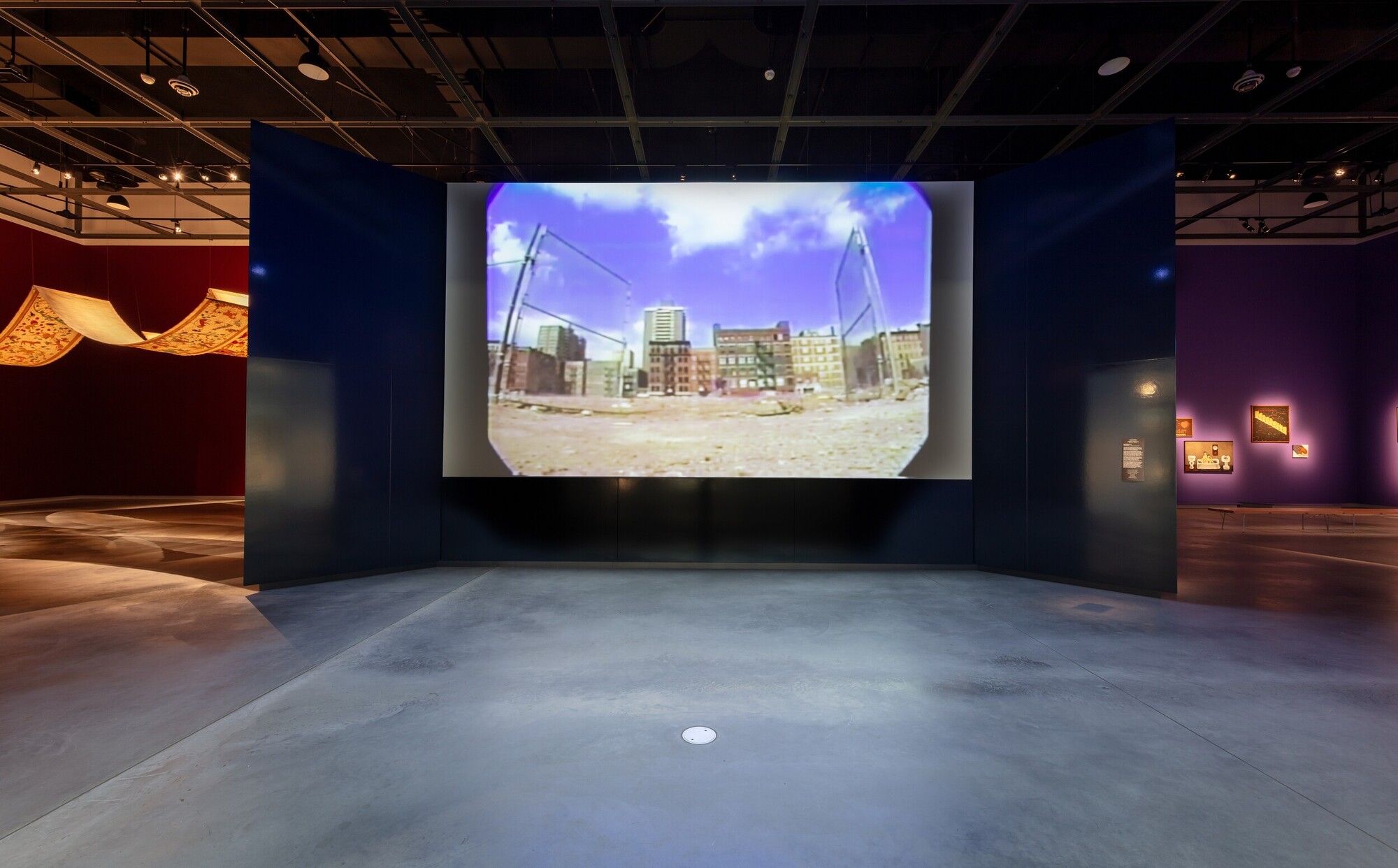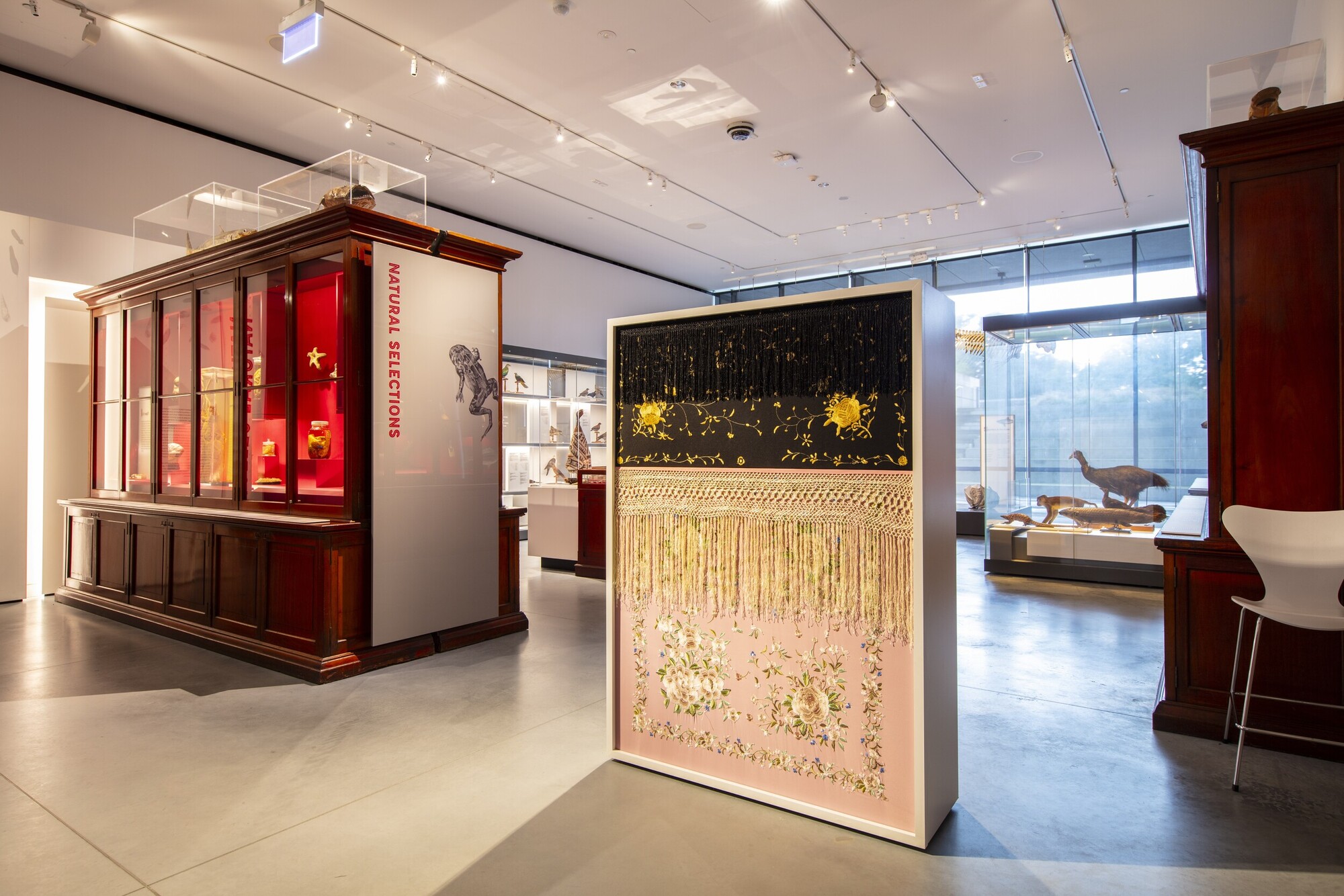Niño de Elche & Pedro G. Romero, O sea, sadopítna-antípodas, puesto del revés y boca abajo (sedopitna-antipodes, turned inside out and upside down) (in progress), 2023. Commissioned by the Biennale of Sydney and Center for Art, Research and Alliances (CARA) and with assistance from Accion Cultural Española. Courtesy the artists © Niño de Elche & Pedro G. Romero. Installation view, 24th Biennale of Sydney, Ten Thousand Suns, 2024, Chau Chak Wing Museum, University of Sydney. Photograph: David James.
The 24th Biennale of Sydney: Ten Thousand Suns by Soo-Min Shim
Soo-Min Shim
On 9 March, the Biennale of Sydney, titled Ten Thousand Suns, opened at the University of Sydney’s Chau Chak Wing Museum (CCWM). On 22 April, just over a month after the Biennale opened, the University of Sydney student encampment for Palestine was established in front of the sandstone quadrangle, just across from CCWM. To visit the Biennale, one must pass the quadrangle and the tents sprawled across the manicured green lawns of the University in front of CCWM. At first, hearing the student protests outside the CCWM felt discordant with the Biennale’s wall text, which read: Ten Thousand Suns “illuminat(es) a collective future lived with irrepressible joy that is not only possible, but also necessary.” Yet, upon closer listening and looking, Ten Thousand Suns does not merely present itself as an empty carnivalesque extravaganza. Rather, it offers a sober and clear recognition that the curated artists respond to a world in crisis, “a world ablaze.”

Diane Burns, Alphabet City Serenade, 1988. Courtesy Bob Holman, Poetry Spots (poetryspots.com); Video © Bob Holman, Poetry Spots. Text © Diane Burns Estate. Installation view, 24th Biennale of Sydney, Ten Thousand Suns, 2024, Chau Chak Wing Museum, University of Sydney. Photograph: David James.
While the Biennale and CCWM have remained silent on Palestine (along with most other art institutions in Sydney), Ten Thousand Suns circumvents a defeatist or passive approach to contemporary art. Its premise is disarmingly far more nuanced than it first appears: that transnational resistance, as much as it responds to violence and oppression, is a source of joy and celebration. In her video work, Alphabet City Serenade (1988), Chemehuevi and Anishinaabe poet Diane Burns declares “I hate the United States”, addressing the gentrification of New York’s Lower East Side and the settler-colonial project of the United States more broadly. At the time of my visit, Burns’ poem intertwined with chants from the Palestine Encampment protesting the settler-colonial project of Israel and Australia. Choy Ka Fai’s video work Exodus (2024), tucked away on the opposite wall, added another auditory thread in the space. Tik Tok stars Dewi Arum Girls dance to a pop remix of the track ‘Wanderer without Destination’, originally released in 1966 by the Tielman Brothers (a Dutch-Indonesian band from the 1950s). The song’s title alludes to Indonesian exiles in the Netherlands after World War II. Choy Ka Fai and Diane Burns’s video works amalgamate to create a soundscape of colonial reckoning from the United States to Indonesia, staged in Australia, reverberating throughout the CCWM.

Choy Ka Fai, Exodus, 2024. Commissioned by the Biennale of Sydney with generous assistance from Goethe-Institut Australia. Courtesy the artist © Choy Ka Fai. Installation view, 24th Biennale of Sydney, Ten Thousand Suns, 2024, Chau Chak Wing Museum. Photograph: David James.
A quiet resistance is also felt in the Spanish duo Niño de Elche and Pedro G. Romero’s sound and textile installations scattered throughout every level of CCWM. (sedoptina-antipodes, turned inside out and upside down) (in progress) (2023) presents nine songs that reinterpret the colonial history of flamenco music and follow its routes across Mexico, Thailand, the Philippines, Japan, Indonesia, Aotearoa, and Samoa. The polyphony of voices (adopting-antipodes, turned inside out and upside down) (in progress) whisper songs and stories of colonial entanglements and resistance across borders.

Niño de Elche & Pedro G. Romero, O sea, sadopítna-antípodas, puesto del revés y boca abajo (sedopitna-antipodes, turned inside out and upside down) (in progress), 2023. Commissioned by the Biennale of Sydney and Center for Art, Research and Alliances (CARA) and with assistance from Accion Cultural Española. Courtesy the artists © Niño de Elche & Pedro G. Romero. Installation view, 24th Biennale of Sydney, Ten Thousand Suns, 2024, Chau Chak Wing Museum, University of Sydney. Photograph: David James.
As the sounds and visions of the university campus bleed into the glass facade of CCWM, it is impossible not to feel the urgency and importance of the political context in which the Biennale is situated. The Biennale will close on 10 June, yet the encampment will remain for an indeterminate amount of time. Outside the museum, the world burns.
Soo-Min Shim is an arts writer living on Gadigal land and is a PhD candidate at the Australian National University.